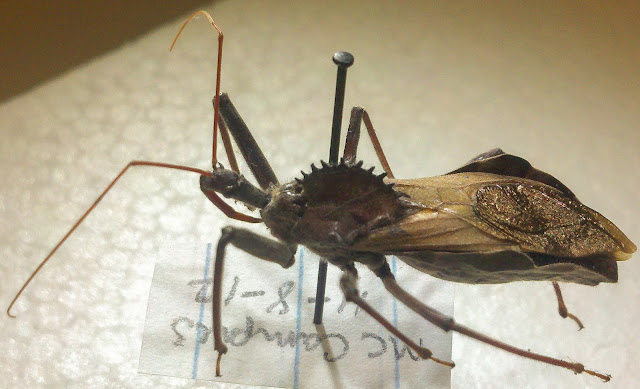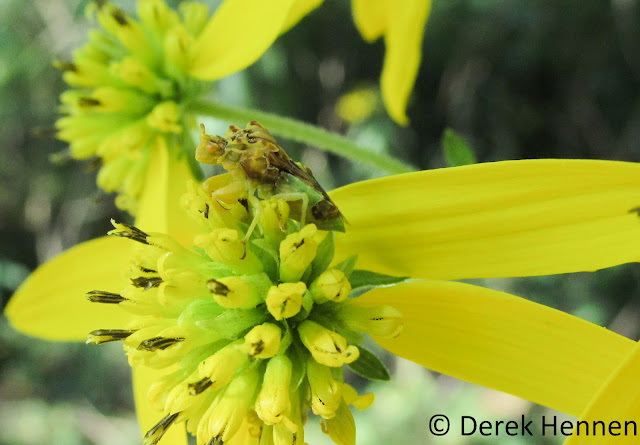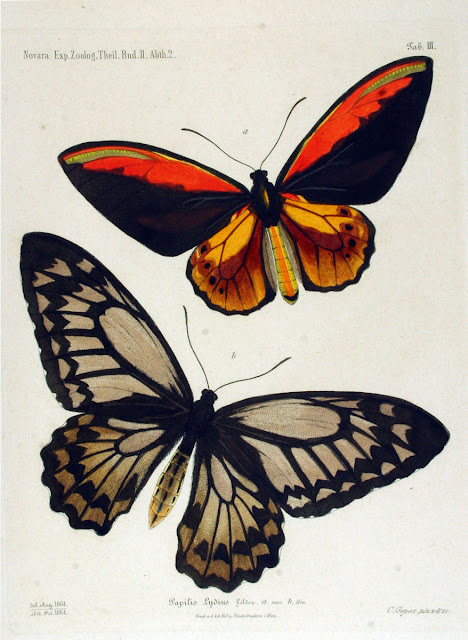Yesterday was a nice day outside, and I figured it would probably be one of the last before the snow started falling. I decided to take advantage of this, and set off to find some mushrooms. (Also, it was snowing when I woke up this morning, so I was correct in my assumption. Maybe I should take up weather forecasting.)
I packed some collecting supplies and set off for the nature trail near my old elementary school. It has a nice array of habitat types and gratuitous amounts of decaying logs, so I was optimistic that I would find some nice mushrooms. However, almost immediately after I stepped onto the trail, my trip turned into millipede hunting. It's just too difficult to resist turning over every decaying log I find in hopes of getting some millipedes out of it.
My habit ended up paying off: I found many millipedes and collected 7 specimens from 4 separate species. It's astounding how many little critters live in decaying wood and the surrounding leaf litter. It's a miniature rain forest in there, but is often overlooked. It's really quite easy to collect arthropods using leaf litter: take a few fistfuls of leaf litter and maybe a little dirt, stuff it into a plastic bag, and later transfer it into a funnel. Put a light bulb above the funnel and a jar with some alcohol underneath the funnel, and give it a few days. All the arthropods will dig down through the leaves and fall into the jar. Put your catch underneath the microscope and you'll see all kinds of spiders, pseudoscorpions, harvestmen, millipedes, insects, mites, and so much more.
Though my excursion focused on millipedes, I did eventually incorporate fungi as well.
Another mysterious fungus, along with a millipede.
I rooted through the leaf litter near a dead log and turned over this old piece of bark. The fungus caught my eye long enough to distract me from the millipede (which I did catch later). It reminded me of another fungus I saw a few summers ago and blogged about
here. I'm still at a loss for what they could be and need to find a good resource on fungi to research it more. I poked one of the drops and it ran onto the wood, into which it was readily absorbed.
The millipede ran surprisingly quickly, as they're usually slow. It didn't try to curl into a spiral when I picked it up, but rather thrashed around a bit instead. This is atypical for millipedes, which was intriguing. I think it's a Chordeumatid in the genus Cleidona, but I'll need to get it under a microscope and look at a few features before I can be sure.
The other millipedes I found were much more millipede-like in their habits. The most abundant millipede I found was a Polydesmid that I've found a few other times, but have yet to identify.
Crawling around its new home, a nice plastic container I prepared.
It looks similar to another millipede I've seen before, Pseudopolydesmus serratus, though it doesn't fluoresce under UV light. I grabbed three specimens, and one is a male, so I should be able to figure it out.
After turning over enough decaying logs, I've learned which millipedes I can expect to see more often than not. And like usual, the beautiful Euryurus leachii, showed up under the logs I looked at.
This millipede is a little over an inch long and is easy to recognize. It has a blunt epiproct (its "tail"), separating it from other Polydesmids. The orange spots along its back and at the edges of its paranota, combined with the purplish hue of its body, readily identify this native millipede. It's certainly in the running for most beautiful millipede in Ohio. Once you cross into the central US, however, be careful: Auturus evides is a lookalike. I haven't seen a specimen of A. evides for myself, so I'm not yet sure how to differentiate them.
Another reason for E. leachii's beauty: its fluorescence under UV light.
Not to be outdone by all these amazing millipedes, the fungi made a comeback somewhere around the Soggy Bottom Trail.
It's usually much soggier.
Decaying wood isn't only for millipedes, it's also great habitat for moss and mushrooms!
Those little brown mushrooms made a cute little home in a hole in the log, flanked by moss. If you look closely at the stalks coming up from the moss, you can see the calyptra (the green sheath) around the spore capsule. Think of the calyptra as a protective blanket keeping the capsule safe until it's time to let the spores go. If you look in the background, you'll also see a polypore coming out of the log...
The Soggy Bottom Trail did not disappoint!





































